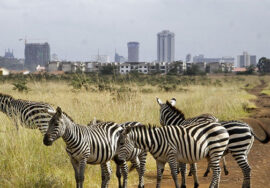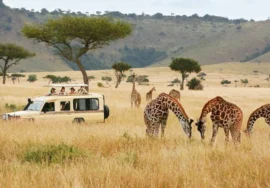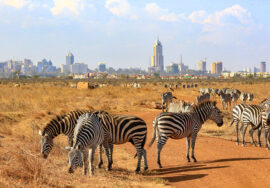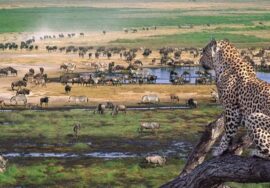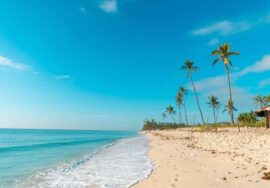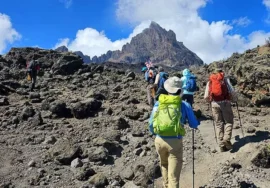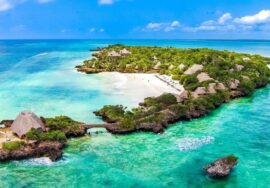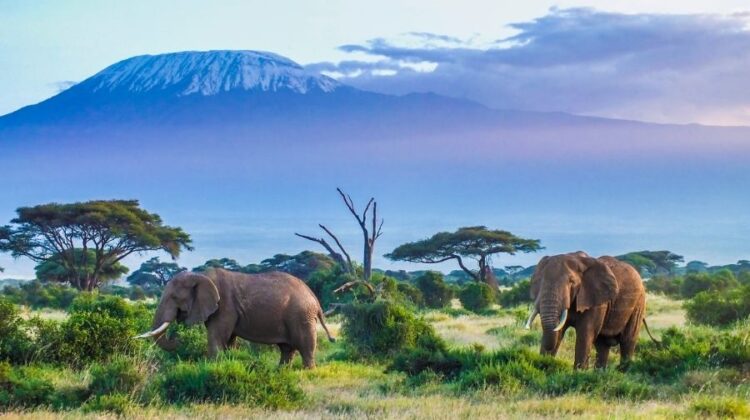
MOUNT KILIMANJARO NATIONAL PARK, TANZANIA
MOUNT KILIMANJARO NATIONAL PARK, TANZANIA, Safari-goers in Kenya and Tanzania can often see Mount Kilimanjaro, the single tower that rises into the sky and represents the grandeur of Africa. Kilimanjaro is the largest freestanding mountain in the world and the highest peak on the continent. Its beauty, danger, and spooky grandeur make it hard to sleep at night.
A climb is something that almost anyone can do; you don’t need expert skills to get up. Kilimanjaro is 5896 m (19,341 ft) high, and it can be very cold and windy, making it impossible for some hikers to reach the top of the famous volcano.
Still, a lot of people want to do it—every year, about 25,000 brave souls have thoughts of climbing Kili’s famous peak… A lot of them do make it to the top.
There are actually several peaks on the big mountain, but Uhuru Peak, which is at the top of Kibo, is the highest and most famous. Even though Kilimanjaro is not erupting, if you stand on Kibo and look into its crater, you can still see clear signs of sulfurous smoke coming from the mountain’s center.
Kilimanjaro is different from the other national parks because it is mostly about the land, especially the beautiful mountain that rises from the farmlands nearby. At lower levels, you can still see animals, but as you go up, you’ll leave the animals and even a lot of the plants behind as you reach one of the world’s greatest points.
How to Get to the Top of Kilimanjaro
There are seven legal ways to get up this big hill, not just one. One of the Northern Circuit ways, the Machame, can be done in six days, but most of them take seven or more.
Most people believe that the longer the route and the more time to get used to the high altitudes, the more likely it is that the climber will stay healthy and make it to the top.
The climb doesn’t need any special gear, but you should make sure you have good boots, a waterproof jacket, and a sleeping bag. If you book your trip through a good outfitter, they will make sure you have the right gear.
Start in the woods
Even though you hope to reach a snowy, empty summit at the end of your trip, it will start in a densely vegetated lowland forest. Do not forget that you are close to the equator!
You can see cows, monkeys, elephants, eland, and sometimes leopards here more than anywhere else.
As you go up, the jungle will give way to open moors with clear skies and lots of sun. Even though the paths aren’t too high, you might feel the effects of the lack of oxygen.
A hilly desert
When you reach an elevation of about 4,000 m (13,000 ft), you’ll notice that the air level has changed and that the plants have been replaced by lichens and mosses.
The air is even thinner above 5000 m (16,400 ft), so you’ll need to stop and rest more often. But as you cross over the icy patches and the moon-like, rocky landscape, you’ll make your last push to the top of Africa, to Kilimanjaro’s main peak.
Looking down, you can see views of Kenya and Tanzania that are a long way from your hard-earned victory. You are now in a special group of people who can say they climbed Kilimanjaro.

